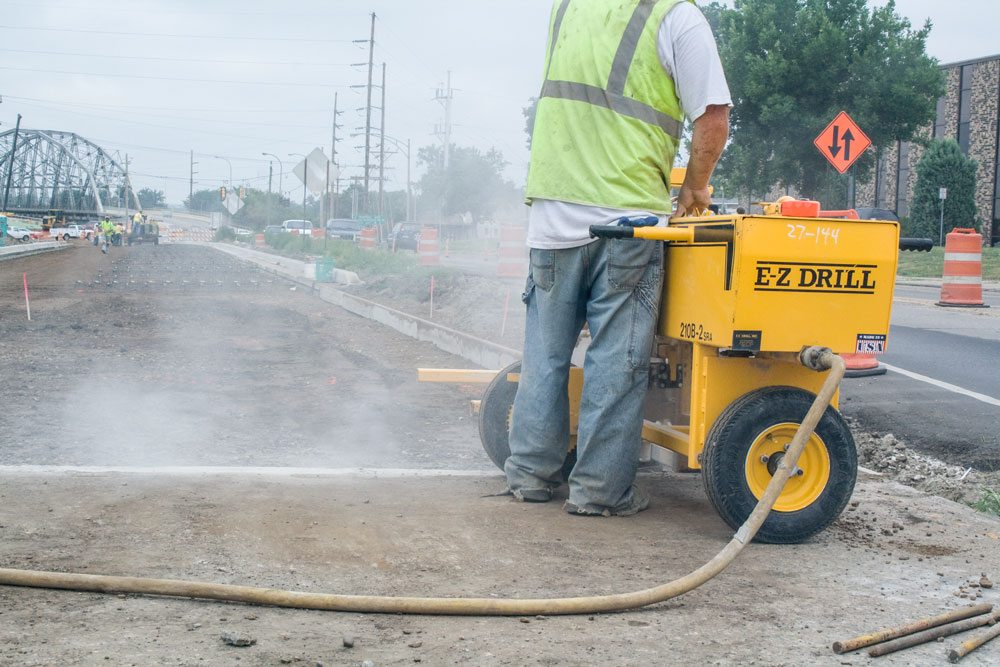Efficient concrete drilling maximizes jobsite productivity. But choosing the right concrete dowel pin drill, and getting the most out of it, can be difficult. Here are a few tips for getting the best efficiency on your next road building, road repair or airport runway repair project.
- First things first: Know the scope of the project. How many holes do you need to drill, and how many holes need to be drilled daily? Desired production rates can help you determine whether you need a single drill model or a multi-gang model.
- Know the type of drilling project. Different models (on-grade models, slab-rider models, equipment-mounted models) are better suited for different projects, such as a lane addition, airport runway, or a full-depth repair job.
- Have the right drill bits. The size and length of the dowels will determine what diameter and how deep of holes that will be drilled. Estimating the bit life can help determine how many drill bits to have on hand.
- Use a compressor with enough capacity to run the drill. The general rule of thumb is 100 cfm of air per drill (i.e. 100 cfm for a single drill, 200 cfm for a 2-gang, etc.). If the compressor is too small, you will run the risk of slowing the drills down and losing production, or not being able to drill the holes at all.
- Choose the right size of hose from the compressor to the drill. A standard 3/4” diameter hose is large enough for a single drill model, but larger hoses are needed for multi-gang drills. Check the drill specifications for size required for your drill. Using a hose that is too small can drastically slow the drills down and lose production.
- Stick to a preventative maintenance schedule to keep the drill in good condition. Far too often, concrete dowel drill maintenance doesn’t cross a contractor’s mind until a breakdown occurs. But if you are proactive and do regular checkups, you can avoid costly and time-consuming breakdowns.
- Follow proper safety procedures to avoid downtime and costly worker compensation claims. Check out our concrete drilling safety blog for tips.
- Properly store the drill if it’s not going to be used for a while to ensure a quick start the next time you need it. This includes flushing the drill motors with any type of lubricating substance the will prevent from forming, and removing excess concrete dust from the machine by blowing it off with compressed air, or pressure washing.
